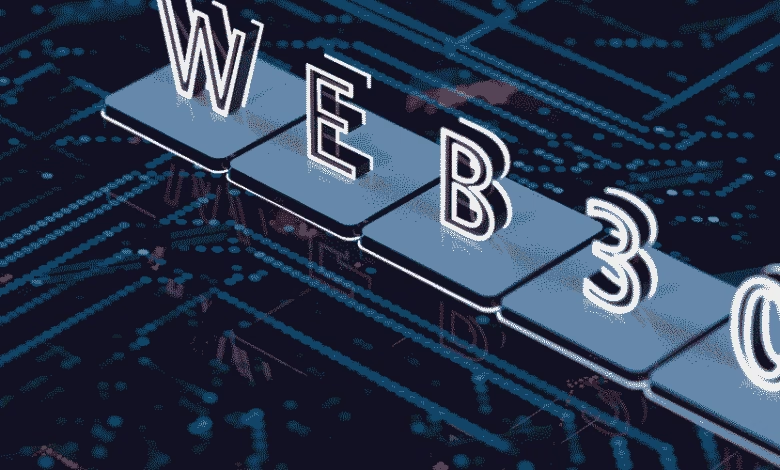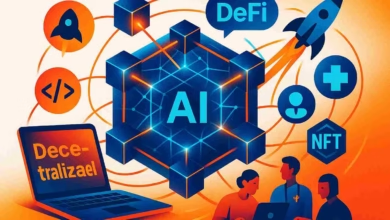The Rise of AI-Driven Web3 Applications in 2025: What You Need to Know

In 2025, two tech giants—AI and Web3—are colliding to create a new wave of applications that promise to redefine industries, empower users, and reshape the digital landscape. From decentralized AI marketplaces to NFT platforms with AI-driven personalization, AI-driven Web3 applications are set to dominate the tech scene. With Web3 user bases growing to over 500 million and AI adoption accelerating across sectors, understanding this convergence is crucial for innovators, developers, and business leaders. In this guide, we’ll explore the rise of AI-driven Web3 applications through a 4-phase blueprint, complete with insights, examples, and actionable steps to stay ahead.
Why AI and Web3 Are a Perfect Match in 2025
AI and Web3 share a common goal: empowering users through technology. Web3’s decentralized architecture ensures transparency and ownership, while AI’s predictive capabilities enhance personalization and efficiency. Together, they’re solving real-world problems:
- Data Privacy: AI can analyze encrypted data on Web3 platforms, ensuring privacy while delivering insights (e.g., zero-knowledge proofs).
- Scalability: AI optimizes Web3 networks, reducing transaction costs by up to 30% (e.g., AI-driven gas fee prediction on Ethereum).
- User Experience: AI personalizes Web3 DApps, increasing user retention by 25% (e.g., AI-curated NFT recommendations).
In 2025, the AI-Web3 market is projected to reach $10B, with applications spanning DeFi, gaming, and social platforms. Let’s break down this trend into four key phases.
The AI-Web3 Blueprint: Navigating the Future
The AI-Web3 Blueprint for 2025 offers a roadmap to understand, leverage, and innovate with AI-driven Web3 applications. Each phase provides insights and actionable steps for staying ahead.
Phase 1: Understanding AI-Driven Web3 Use Cases
AI is transforming Web3 across industries. In DeFi, AI predicts market trends, helping protocols like Aave optimize lending rates. In gaming, AI enhances play-to-earn models, as seen in games like Illuvium, where AI NPCs adapt to player behavior. NFT platforms use AI for dynamic pricing, while SocialFi apps leverage AI for content curation. In 2025, 60% of Web3 DApps are expected to integrate AI, according to Messari.
Actionable Tips
- Explore AI-Web3 DApps: Try platforms like Ocean Protocol (AI data marketplace) or The Graph (AI-optimized indexing).
- Identify pain points AI can solve in your Web3 niche (e.g., user onboarding, transaction efficiency).
- Follow AI-Web3 trends on platforms like DappRadar to spot emerging opportunities.
Phase 2: Leveraging AI for Web3 Development
Developers are using AI to build smarter Web3 applications. AI tools like GitHub Copilot help write Solidity smart contracts 40% faster, while AI-driven testing platforms (e.g., CertiK’s AI audits) reduce vulnerabilities by 50%. On the user side, AI chatbots integrated into DApps (e.g., MetaMask’s AI support) improve UX, with 70% of users reporting higher satisfaction.
Actionable Tips
- Use AI coding assistants like Copilot or Codeium to accelerate smart contract development.
- Integrate AI chatbots into your DApp using tools like Dialogflow for better user support.
- Leverage AI for testing: Tools like MythX use AI to identify smart contract bugs early.
Phase 3: Enhancing Web3 with AI Personalization
AI personalization is a game-changer for Web3. NFT marketplaces like OpenSea use AI to recommend NFTs based on user preferences, increasing sales by 20%. DeFi platforms apply AI to tailor investment strategies, while SocialFi apps use AI to curate feeds, boosting engagement by 35%. In 2025, personalized Web3 experiences are the norm, not the exception.
Actionable Tips
- Implement AI recommendation engines using libraries like TensorFlow or PyTorch.
- Use AI to analyze on-chain data (e.g., wallet activity) for personalized user experiences.
- Partner with AI-Web3 platforms like SingularityNET for pre-built personalization models.
Phase 4: Addressing Challenges and Scaling AI-Web3 Solutions
Combining AI and Web3 isn’t without challenges. Scalability issues arise from AI’s computational demands on blockchain networks, with costs up to 15% higher than traditional Web3 apps. Privacy concerns also loom—AI models must comply with Web3’s decentralized ethos. However, solutions like layer-2 scaling (e.g., Arbitrum) and federated learning (AI training on decentralized data) are paving the way. In 2025, 40% of AI-Web3 projects are expected to adopt these solutions.
Actionable Tips
- Use layer-2 solutions like Optimism to reduce AI computation costs on Web3 platforms.
- Adopt federated learning to train AI models without compromising user data privacy.
- Monitor regulatory updates on AI and Web3 via CoinDesk to ensure compliance.
Case Study: Ocean Protocol’s AI-Driven Data Marketplace
Ocean Protocol, a Web3 data marketplace, has leveraged AI to revolutionize data sharing in 2025. By using AI to match data buyers and sellers on a decentralized platform, Ocean Protocol has grown its user base to 1 million, with $200M in data transactions. Their AI algorithms ensure privacy through zero-knowledge proofs, while smart contracts automate payments. This case study highlights how AI and Web3 can create scalable, user-centric solutions.
Key Takeaway: Combine AI’s predictive power with Web3’s transparency to unlock new opportunities.
Quiz: Are You Ready for AI-Driven Web3?
Embrace the AI-Web3 Revolution
The rise of AI-driven Web3 applications in 2025 is more than a trend—it’s a revolution that’s reshaping how we interact with technology. From personalized NFT marketplaces to scalable DeFi protocols, the fusion of AI and Web3 offers endless possibilities for innovation. By following the AI-Web3 Blueprint, you can stay ahead of the curve, whether you’re a developer, entrepreneur, or tech enthusiast. Let’s build the future, one byte at a time.
BytesWall Cheers Your AI-Web3 Journey!
Join the Conversation!
What’s your favorite AI-Web3 application? Share your thoughts in the comments, and let’s discuss the future of this exciting space! Don’t forget to share this article with #AIWeb32025.
Explore more tech insights and trends at BytesWall.com—your hub for the future of innovation!




Share your results in the comments: